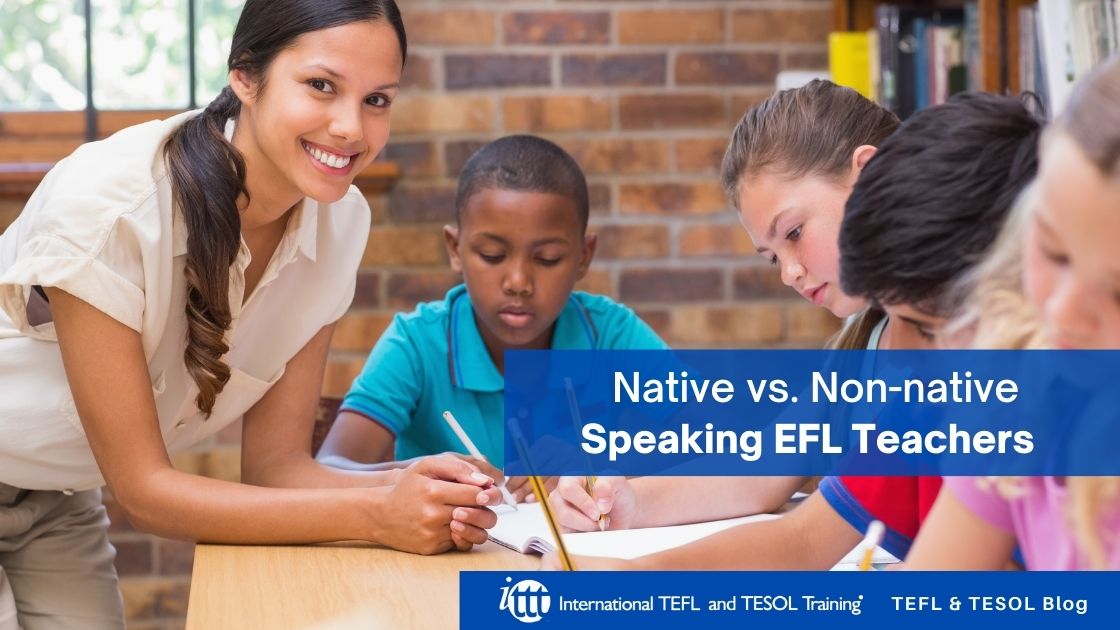
The Value of Language Teachers: Native vs. Non-Native Perspectives
Introduction
Language acquisition is a complex journey influenced by the teacher’s background. Native and non-native speakers each bring unique strengths and challenges to the classroom. This post explores these differences, examining their implications for language learners.

The Advantages of Native Speakers
Native speakers often serve as linguistic models, showcasing authentic pronunciation and cultural nuances that enrich the learning experience. Their personal experiences with the language allow them to share idiomatic expressions, colloquialisms, and cultural references that can make lessons more engaging and relatable. For instance, native speakers can provide firsthand accounts of cultural practices, traditions, and historical contexts that shape the language. However, the very familiarity that makes native speakers effective can also be a double-edged sword. Their deep-rooted understanding of the language may sometimes hinder their ability to empathize with beginner learners. Native speakers may underestimate the difficulties faced by students who are grappling with new sounds, vocabulary, and grammatical structures. This disconnect can lead to frustration for both the teacher and the student, highlighting the need for native speakers to adopt a more learner-centered approach. In summary, while native speakers possess invaluable linguistic and cultural insights, they must also cultivate awareness of their students’ unique challenges to create a supportive and effective learning environment.
The Strengths of Non-Native Speakers
Non-native speakers bring a wealth of understanding to the language classroom, particularly for learners from similar linguistic backgrounds. Having navigated their own language learning journeys, non-native teachers can empathize with their students’ struggles, providing relatable insights and encouragement. This shared experience fosters a supportive atmosphere where students feel understood, which can significantly boost their confidence. Additionally, non-native speakers often have a rigorous academic foundation in grammar and language rules. Their detailed study of the language means they can explain complex concepts clearly and anticipate common errors students may encounter. This proactive approach allows non-native teachers to tailor their instruction to address specific challenges, ultimately enhancing the learning experience. Moreover, non-native speakers are frequently well-versed in the intricacies of language learning strategies, as they may have employed various techniques during their studies. This can lead to innovative teaching methods that resonate with students. By leveraging their unique strengths, non-native speakers can effectively bridge the gap between linguistic theory and practical application, fostering a deeper understanding of the language among their students.
The Role of Experience in Teaching
Experience plays a pivotal role in the effectiveness of language teachers, transcending the divide between native and non-native speakers. Teachers who have spent years in the classroom often possess a rich reservoir of pedagogical strategies and insights that can significantly benefit their students. Through trial and error, experienced educators learn how to engage diverse learners, adapt their teaching styles, and implement effective classroom management techniques. Furthermore, continuous professional development is crucial for enhancing teaching effectiveness. Workshops, conferences, and advanced courses equip teachers with the latest methodologies, tools, and resources in language education. This commitment to lifelong learning enables both native and non-native teachers to refine their skills and stay updated on best practices. Ultimately, the combination of experience and ongoing professional growth not only enriches the teacher’s own practice but also directly impacts student outcomes. An experienced teacher can create a dynamic and responsive learning environment, where students feel empowered to take risks and explore the language without fear of judgment.
The Importance of Grammar and Writing Skills
A solid grasp of grammar is essential for effective communication, and both native and non-native speakers have unique contributions to make in this area. Non-native teachers often excel in grammatical proficiency due to their rigorous educational backgrounds. They are typically trained to understand the rules of the language in detail, making them adept at teaching grammar concepts clearly and effectively. This high level of grammatical understanding can lead to clearer writing and less frequent errors in student work. Non-native teachers are well-equipped to help students navigate common pitfalls, such as confusing homophones or misusing verb forms. By providing targeted instruction on these issues, they can help students develop stronger writing skills that will serve them well in academic and professional settings. Moreover, native speakers can also contribute to students’ grammatical development by modeling natural language use in context. Their ability to convey subtleties of the language can enhance students’ comprehension and application of grammar rules. The collaboration between native and non-native teachers in emphasizing grammar can create a more comprehensive language education, benefiting students in their communication skills.
The Influence of Cultural Context
Cultural understanding plays a critical role in language teaching, as language is deeply intertwined with the culture it represents. Native speakers provide invaluable context-rich insights into their culture, fostering student engagement and enhancing comprehension of the language. They can introduce students to cultural nuances, traditions, and social practices that influence language use, making lessons more relatable and meaningful. On the other hand, non-native teachers may bring diverse cultural perspectives that enrich the learning environment. Their backgrounds can offer students a broader view of how the language is used in various contexts, highlighting differences in dialects, customs, and communication styles. This diversity encourages students to appreciate the richness of the language and its global significance. Furthermore, understanding cultural context can help students navigate social interactions more effectively. By learning about cultural norms and values, students are better prepared to communicate appropriately in various situations, whether in formal settings or casual conversations. Ultimately, both native and non-native teachers can leverage their cultural knowledge to create a more holistic language learning experience.
The Impact of Standardized Tests
Standardized tests, such as the SAT, often reflect a specific cultural context that can disadvantage non-native speakers. These assessments not only evaluate language proficiency but also require a nuanced understanding of cultural references and expectations. For many non-native speakers, this poses a significant challenge, as they must navigate both language barriers and unfamiliar cultural norms embedded in the test’s structure. Moreover, the pressure to perform well on standardized tests can create anxiety for students, particularly those from underrepresented backgrounds. The stakes are high, and the implications for college admissions and scholarships amplify this stress. Non-native speakers may feel the weight of additional scrutiny, as their performance is often compared to that of native speakers, which can create feelings of inadequacy. To address these challenges, it is crucial for educators to provide targeted support for students preparing for standardized tests. This can include practice tests, workshops on test-taking strategies, and cultural orientation sessions to familiarize students with the nuances of the assessments. By equipping students with the tools they need to succeed, educators can help level the playing field and ensure that all learners have the opportunity to excel.
Balancing Standards and Expectations
Admissions processes in educational institutions often consider various factors, including socioeconomic background and language proficiency. Non-native speakers, particularly those from low-income or underrepresented groups, may face different standards and expectations during the admissions process. This disparity can lead to inequities in access to higher education and opportunities for career advancement. It is essential for educational institutions to recognize these disparities and adapt their evaluation criteria accordingly. Implementing holistic admissions processes that consider the individual context of each applicant can help mitigate bias and ensure that all students are evaluated fairly. This approach acknowledges the unique challenges faced by non-native speakers and allows for a more equitable assessment of their potential. Furthermore, fostering an inclusive environment within educational institutions is vital for supporting non-native speakers. Providing resources such as language support programs, mentorship opportunities, and cultural integration initiatives can help bridge gaps and empower students to succeed. By prioritizing inclusivity and equity, institutions can create a more diverse and dynamic learning environment that benefits all students.
Conclusion
In conclusion, both native and non-native speakers can be effective language teachers, each contributing uniquely to the educational landscape. Native speakers provide authentic linguistic and cultural insights, while non-native speakers offer relatable experiences and rigorous grammatical knowledge. Emphasizing strengths, understanding cultural contexts, and acknowledging the challenges faced by learners can enhance language education. Ultimately, fostering an inclusive learning environment benefits all students. By recognizing the value of diverse teaching perspectives and implementing supportive practices, educational institutions can create a richer and more effective language learning experience. In doing so, they prepare students not only to master the language but also to navigate the complexities of communication in an increasingly interconnected world.
